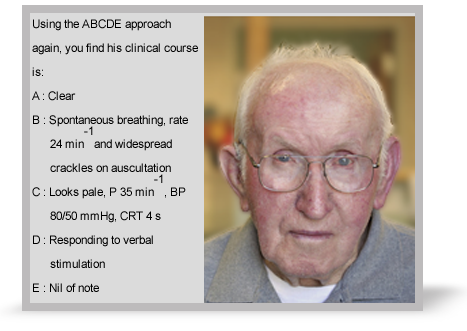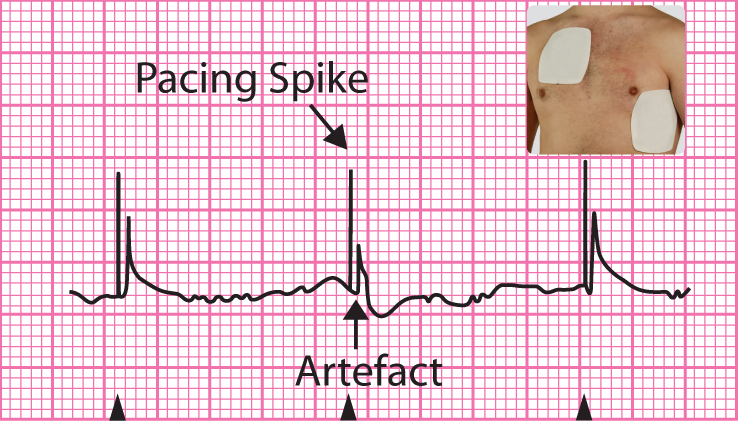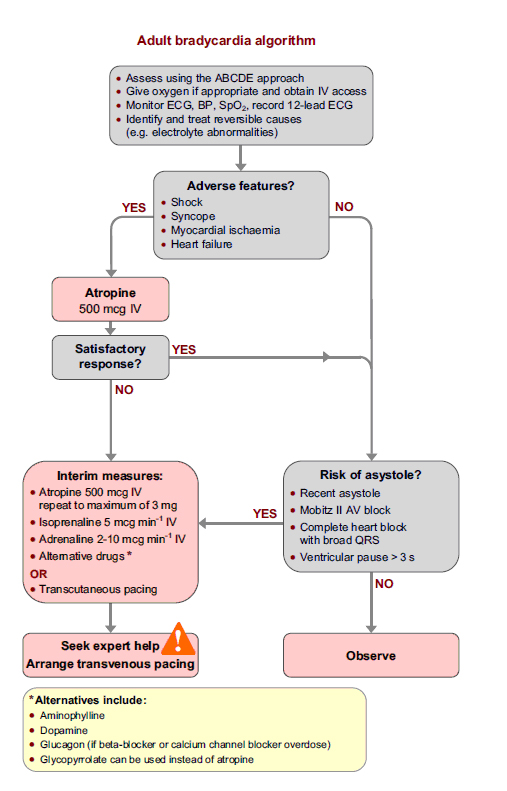
- Next steps

Feedback
That is not quite right.Feedback
No, that is not quite right.
If up to 3 mg of atropine have not yet been given then subsequent doses would be appropriate up to a total of 3 mg.
Percussion pacing is appropriate in cases where bradycardia is so profound that it causes clinical cardiac arrest.
Where response to IV atropine at maximal doses has not been effective transcutaneous pacing should be initiated immediately. The essentials tab gives more information on this.
Amiodarone is indicated in tachyarrhythmias as it slows atrioventricular conduction. It should not be used in brady arrhythmias.
Where interim measures have been used the next step would be to seek expert help to arrange transvenous pacing.
Verapamil is a calcium channel blocking drug that slows conduction and increases refractoriness in the AV node. It is used in certain tachyarrhythmias.
The Essentials tab gives more information on interim measures.
Feedback
That is not right.Feedback
No, that is not right.
If up to 3 mg of atropine have not yet been given then subsequent doses would be appropriate up to a total of 3 mg.
Percussion pacing is appropriate in cases where bradycardia is so profound that it causes clinical cardiac arrest.
Where response to IV atropine at maximal doses has not been effective transcutaneous pacing should be initiated immediately. The essentials tab gives more information on this.
Amiodarone is indicated in tachyarrhythmias as it slows atrioventricular conduction. It should not be used in brady arrhythmias.
Where interim measures have been used the next step would be to seek expert help to arrange transvenous pacing.
Verapamil is a calcium channel blocking drug that slows conduction and increases refractoriness in the AV node. It is used in certain tachyarrhythmias.
The Essentials tab gives more information on interim measures.
Feedback
Yes, that is right.
The correct treatment for this patient is:
- Repeat atropine up to a total of 3 mg and where response to IV atropine at maximal doses has not been effective, transcutaneous pacing should be initiated immediately.
- Where interim measures have been used the next step would be to seek expert help to arrange transvenous pacing.
The Essentials tab gives more information on interim measures.
References
Essentials: Interim measures
Adrenaline - infusion of 2-10 mcg min-1 titrated to response
or - isoprenaline infusion 5 mcg min[sup]-1[/sup] as starting dose
or - dopamine infusion 2-5 mcg kg[sup]-1[/sup] min[sup]-1[/sup]
or – transcutaneous pacing:
- Arrange sedation where necessary.
- Ensure the skin is dry and free from excess hair.
- Apply monitoring leads and electrode pads.
- Select an appropriate pacing rate.
- Turn on the pacemaker.
- Gradually increase the output while observing the patient.
- Observe the ECG for a pacing spike until each spike is followed by a QRS complex (electrical capture).
- Confirm electrical capture is associated with mechanical capture by feeling for a pulse.

Algorithm: The bradycardia algorithm
The adult bradycardia algorithm from chapter 11 of the ALS manual.

